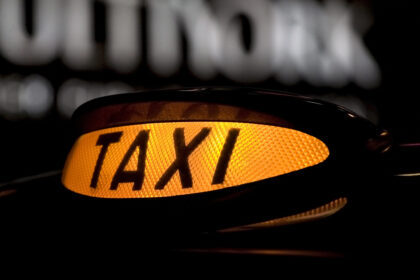The cost of getting a taxi back on the road after a crash is continuing to rise – and drivers are worried that they could be left footing the bill.
Having been hit by the pandemic, rising fuel costs, and then the cost-of-living crisis, the soaring cost of parts is once again squeezing their finances.
But, as with any professional drivers who earn their living on the roads, they aren’t left with many choices.
Squeeze
Patons Insurance claims manager Cheryl Doran explains that while prices across the board are going up, taxi fares only increase slightly when approved by the licensing authorities. And in the meantime, taxi drivers are having to make savings wherever they can to keep their cabs running.
Cheryl said: “When people get a car insurance renewal that has almost doubled on the previous year, they can choose to get rid of the car or opt for cheaper insurance such as third-party only.
“A taxi is the driver’s tool of their trade so they can’t just walk away from it, especially as many will still owe a lot on finance. Taxi drivers still need the best level of cover available to them in case of an accident.”
Price and availability of parts
Among the main reasons behind rising costs are the price and availability of parts, and the length of time taken to carry out repairs. Advances in technology also mean that while an ordinary bumper would have cost insurers about £800 to replace, modern vehicles with parking sensors, reversing cameras, etc, now cost up to £3,000. The cost of windscreens has also seen significant cost increases for newer vehicles. Labour costs have also increased with salaries rising in the automotive repair industry and skills shortage for body shop workers and qualified mechanics.
Cheryl said: “We used to be able to give precise timeframes for repairs, replacement vehicles, etc, but now everything costs so much more and while we might be able to repair a vehicle in a couple of days and get it back to the driver, the next repair might take weeks or months, plus the added cost of replacement hire cars.”
Taxi drivers are known for taking pride in their vehicles and keeping them spotless. But delays, rising parts prices and labour costs mean that in the event of a claim, as long as their vehicle is drivable, they will have to carry on with a dented bonnet or door panel, or damaged bumper until everything is in place for repairs to be carried out.
And this delay can also mean that prices rise between the time of the original estimate and parts being purchased, which can further hold up the repair.
Cheryl said: “Taxi drivers are being hit by rising prices everywhere, not just the cost of parts for repairs. It is really difficult and talking to customers, we know they are finding it tough but because they need their cars to earn a living. All they can do is ride out the storm and hopefully in a year to 18 months, things will be back to normal.”
Demand for temporary replacement vehicles
While taxis are in for repairs, for non-fault accidents, drivers can usually claim for a temporary replacement taxi to enable them to keep working.
Jon Chadwick, of Countrywide Vehicle Rentals, (part of the Patons Group) which supplies temporary replacement taxis, is also seeing problems caused by rising costs, especially having to replace their own vehicles every three years to maintain standards.
He added: “We have noticed a rise in our own vehicle servicing costs due the parts prices going up dramatically and a big delay in getting parts to maintain our vehicles.”
As other vehicle providers also feel the pinch, some have been forced to close, adding to the demand put on Jon and his team.
He said: “We are seeing an increase in demand due to competitor companies closing. This is partly due to increased repair costs, vehicle purchase costs and party attributed to cashflow as they have to wait longer for third-party insurers to settle hire invoices.
“We have noticed an increase in the average number of days our vehicles are out on hire due to various factors, firstly a delay in repairing garages being unable to obtain parts, and secondly due to some insurers having unfilled vacancies in their claims departments. Low staffing levels can lead to delays in getting repairs authorised further compounds the issues. The net effect is hires being longer than they should and the overall claim costs increasing.”
Jon agrees that the situation doesn’t look like changing in the near future, but says there are ways costs could be reduced.
He added: “It does look like this is the new norm unfortunately, at least in the short term, but improving processes and dealing with claims quicker would bring down the costs across the board for all insurers and allow them to pass savings on to their customers.”



